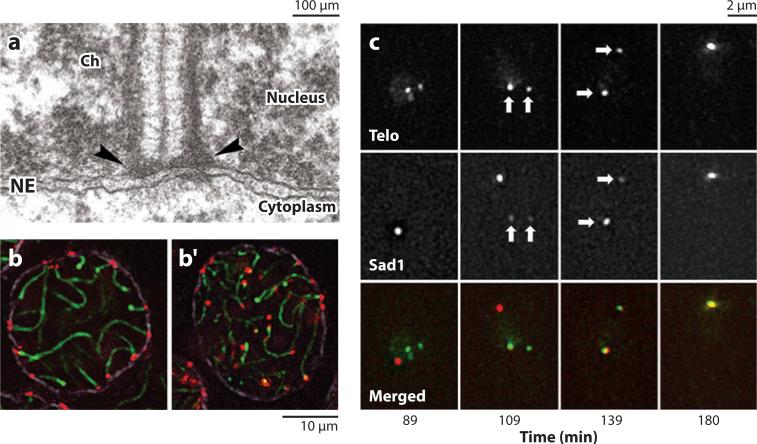Figure 6.
Roles of KASH-SUN bridges in moving meiotic chromosomes. (a) Transmission electron microscopy image from a mouse spermatocyte showing a telomere (arrowheads) of a synapsed meiotic bivalent (extending up from telomere) attached to the inner nuclear membrane (INM) of the nuclear envelope (NE). Ch, chromatin. Reproduced with permission from The Proceedings of the National Academy of Sciences, U.S.A. (Schmitt et al. 2007). (b) A heterozygous control mouse spermatocyte showing telomeres (red ) of bivalents (green) attached to the nuclear envelope (purple). (b′ ) A spermatoycyte from a sterile Sun1 homozygous knockout mouse showing that telomeres fail to attach to the nuclear envelope. Reproduced with permission from Developmental Cell (Ding et al. 2007). (c) Sad1 (red in merge) localizes predominantly to the spindle pole body (89 min). During meiosis, some Sad1 leaves the spindle pole body, associates with telomeres (Telo, green in merge) on the INM (109 min), and moves the telomeres to the spindle pole body to form the bouquet formation (180 min). Reproduced with permission from Cell (Chikashige et al. 2006).

